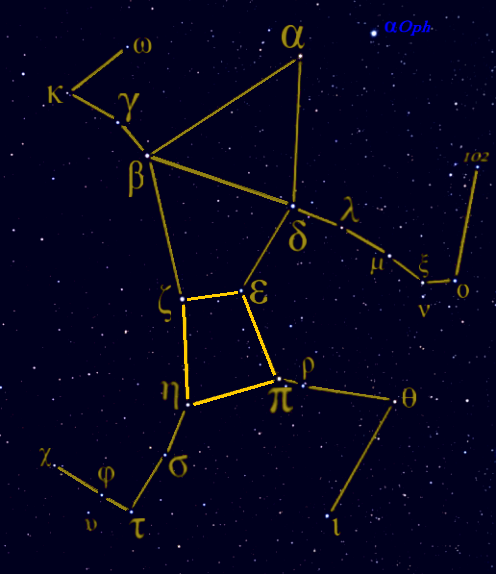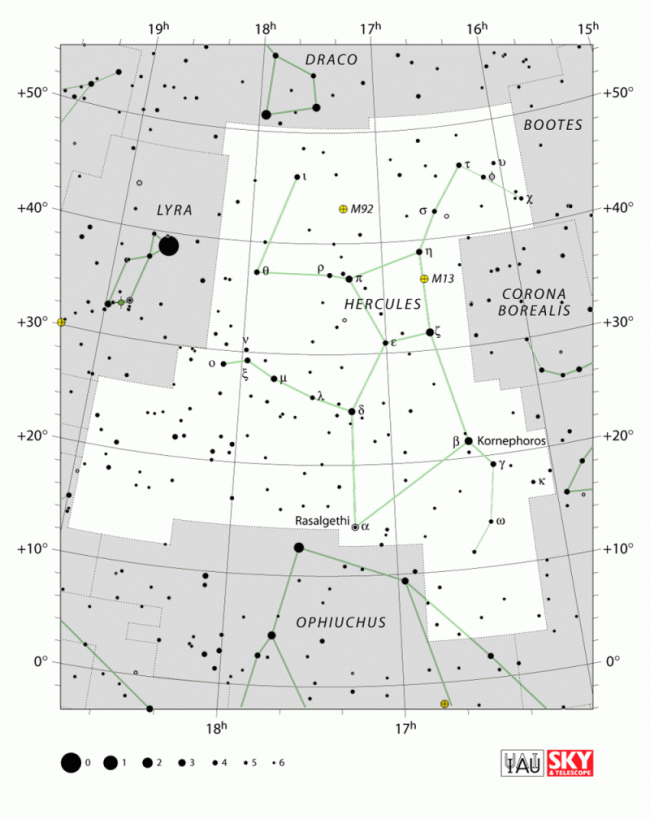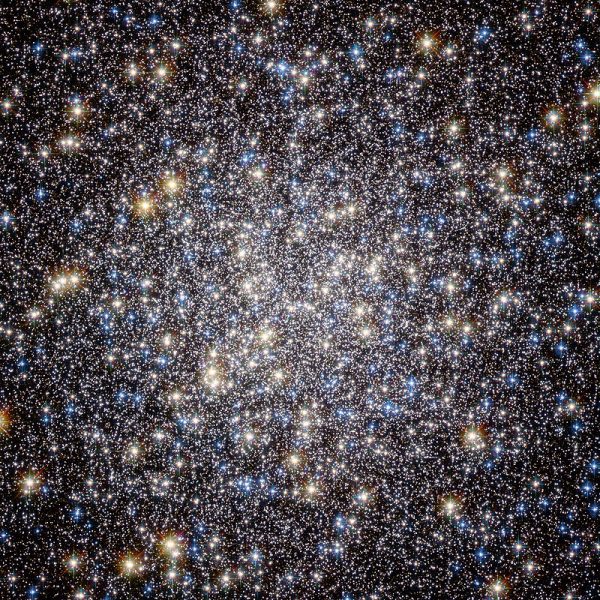
Finding Hercules
Tonight, try locating one of the coolest constellations up there. It’s the constellation Hercules the Strong Man and it’s ascending in the east-northeast on these Northern Hemisphere spring evenings. You can find Hercules between two brilliant stars, Arcturus and Vega. The chart at the top of this post shows the evening sky in late April, when the constellation Hercules, and the two stars so essential for finding it, are well up in the northeastern to eastern sky.
Arcturus is in the constellation Boötes, and Vega is in the constellation Lyra. However, at nightfall, Vega may still be below your horizon. If so, wait a while … it’ll rise soon.
So if you draw a line between Arcturus and Vega, it’ll pass through what is known as the Keystone – an asterism, or noticeable star pattern – in Hercules. The Keystone is a squarish figure in the center of Hercules. See it on the charts above and below?

Last chance to get a moon phase calendar! Only a few left. On sale now.
The Keystone guides you to M13
The fact is, the Keystone is a helpful pattern for more reasons than one. First, it’s noticeable on the sky’s dome, so it can lead your eye to Hercules.
Also, the Keystone in Hercules can help you find the most fascinating telescopic object within the boundaries of this constellation. This object is a globular star cluster known to stargazers as M13 or the Great Cluster in Hercules. Although M13 is barely visible to the eye alone in dark skies, binoculars reveal a nebulous starlike patch of light. And telescopes show stars both on the periphery of the cluster and toward its center.

As a matter of fact, this beautiful object is one of the galaxy’s oldest inhabitants. It’s a tightly packed spherical collection of about one million stars.
Read more: M13 or the Great Cluster in Hercules
EarthSky astronomy kits are perfect for beginners. Order today from the EarthSky store

Hercules has a second globular cluster
Although it’s not as spectacular as M13, Hercules has another great globular cluster, M92. It makes a triangle with the two northernmost stars in the Keystone. So imagine it is where Hercules’ head would be. Even though you can marginally see it without optical aid, it shows up easily in binoculars and a telescope.
Bottom line: Use the brilliant stars Arcturus and Vega to find the constellation Hercules tonight.
Enjoying EarthSky so far? Sign up for our free daily newsletter today!
The post Hercules is between 2 bright stars: Vega and Arcturus first appeared on EarthSky.
0 Commentaires